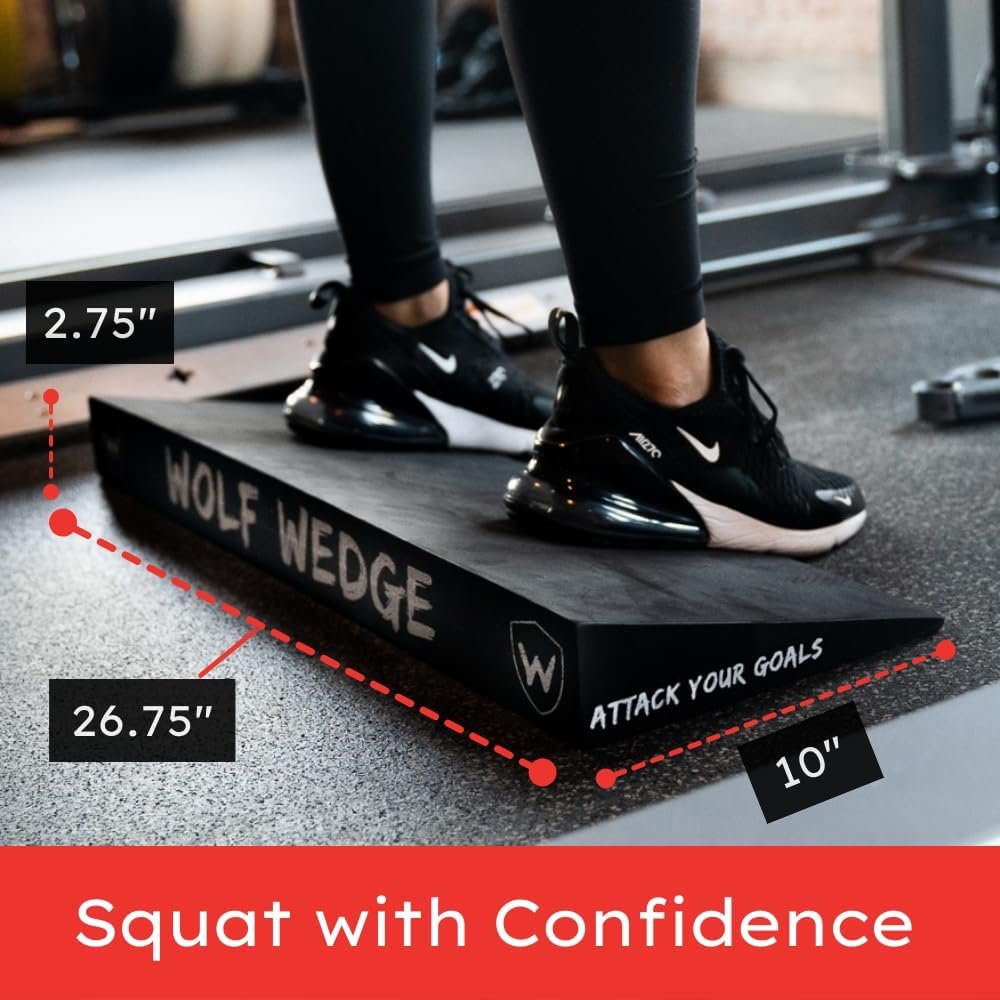
Have you ever watched your patient squat, immediately noticed poor form, added a Wolf Wedge Squat Wedge Slant Board, and magically their form improves—but you’re not quite sure why?
This is a common scenario. We add exercise modifications like slant boards but don’t always understand why they work. Without understanding the “why,” it’s hard to maximize the benefits of the modification. In this article, we’ll break down three key questions to help you get the most out of the Wolf Wedge Squat Wedge Slant Board:
- What does the slant board actually do?
- Who is the slant board best for?
- How do you strategically use it?
What Is a “Normal” Squat?
Before answering those questions, we need to define a “normal” squat. For simplicity, let’s define it as someone who can move through a full range of motion in a straight, vertical squat without pain.
Some patients can do this with ease, while others get stuck around 90 degrees, experience knee valgus, or hinge too much instead of staying upright. These compensations happen when the body can’t change shape through different phases of the squat.
Let’s break that movement down.
The Three Phases of Squatting
Using the pelvis as a reference, we can divide a squat into three phases based on hip flexion:
- Phase 1: 0°–60° = External rotation bias (posterior compression, front expansion)
- Phase 2: 60°–90° = Internal rotation bias (posterior expansion, front compression)
- Phase 3: 90°–120° = External rotation again (posterior compression returns)
A normal, pain-free squat relies on smooth transitions through these phases. But when patients can’t adapt their pelvic shape, they experience tightness, poor form, or discomfort. The Wolf Wedge Squat Wedge Slant Board can help address this.
What Does the Wolf Wedge Slant Board Actually Do?
Standing on a slant board elevates the heels and tips the body forward. This action naturally orients the pelvis posteriorly, creating compression in the back and expansion in the front.
Think of this like unlocking a “locked door” in the front of the body. It opens space that allows the patient to move deeper into the squat. Many believe it’s just about ankle mobility—but the pelvis’s orientation is a huge part of what makes the Wolf Wedge Squat Wedge Slant Board so effective.
By promoting this posterior pelvic tilt, the board allows access to a fuller range of motion, often instantly improving squat depth and form.
Who Benefits Most from the Slant Board?
While almost anyone can benefit, certain individuals respond particularly well—especially those in an anterior pelvic tilt. These patients often present with a flared rib cage, overextended posture, and struggle with compression in the right places.
They tend to squat in a horizontal, “escalator” pattern instead of a vertical “elevator” pattern. Their posterior is too open, and their front is compressed—making it hard to access the range needed for a good squat.
The Wolf Wedge Squat Wedge Slant Board shifts their starting position into a more compressed posterior and open anterior, making squatting feel and perform better almost immediately.
How to Use the Slant Board Strategically
The key is intention. Don’t just use the Wolf Wedge Squat Wedge Slant Board because someone online did. Use it because you understand how it interacts with your patient’s movement pattern.
When someone is in pain, it’s often because they’re stuck in a limited motion pattern. The slant board helps reintroduce movement variability—taking the patient to the opposite end of their usual pattern. That shift promotes balance, reduces discomfort, and improves performance.
For example, arched-back patients with anterior tilt benefit from the posterior compression that the board facilitates, allowing them to reclaim squatting ability they didn’t previously have.
Final Thoughts
Understanding the biomechanics behind the Wolf Wedge Squat Wedge Slant Board allows you to use it not just as a quick fix, but as a powerful tool for rehab, strength training, and mobility development. When used with purpose, it becomes more than a squat modification—it becomes a strategy for better results.
